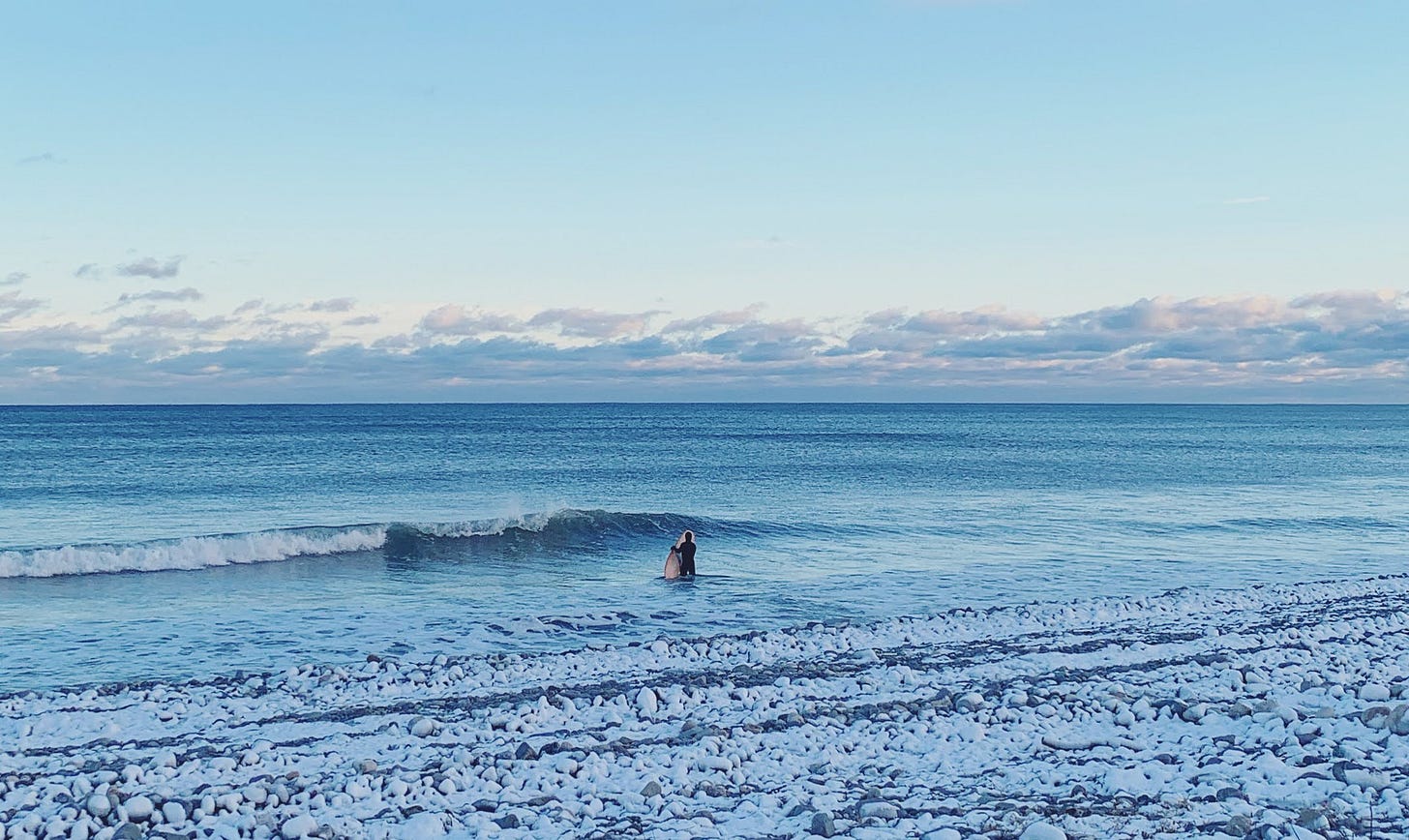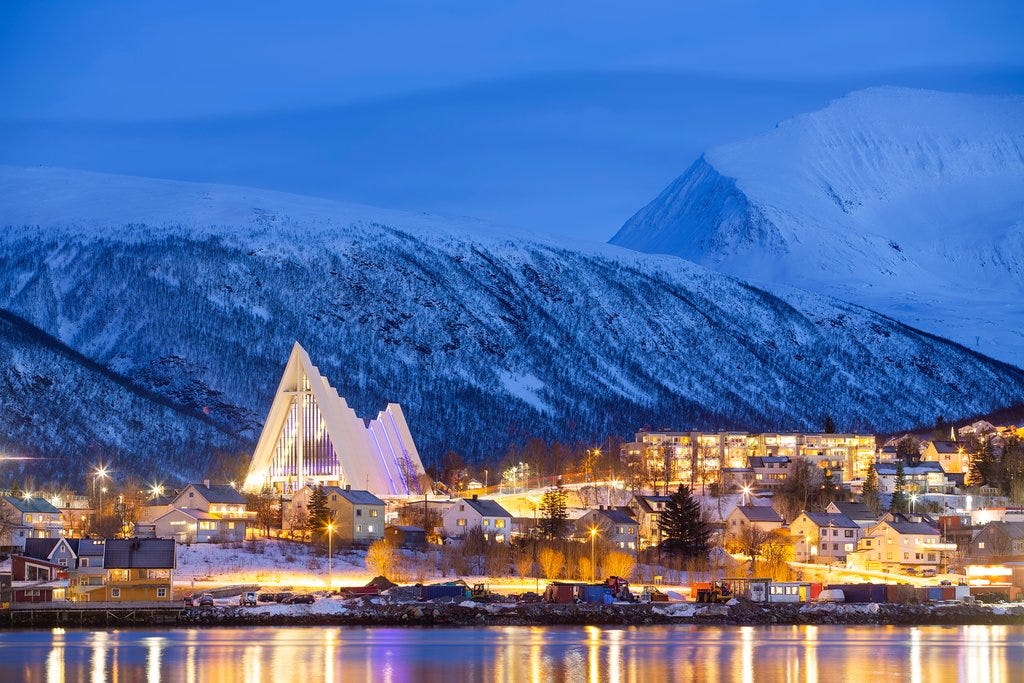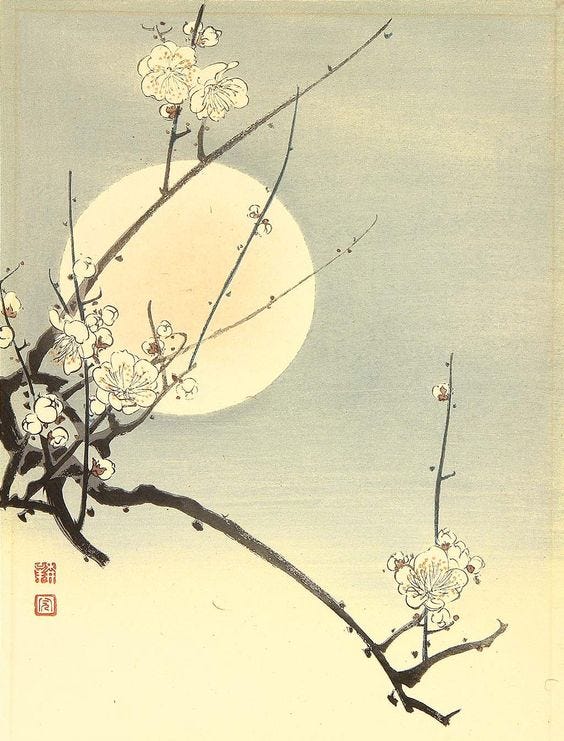Welcome to the 14th volume of Morning Pages, a newsletter sharing inspirations on art, creativity, and coaching wisdom.
Last week we had the first snowstorm in Maine. After the storm, we walked to the beach. A thin blanket of fresh snow covered the beach. Surfers were braving the waves in 30-degree water. The scenery was serene and beautiful.
For many, winter in Maine can seem almost mythical. Days that feel devoid of sunlight, massive piles of snow, and freezing temperatures.
Thanks to Games of Thrones, “Winter is coming” is now the indication of something bad is going to happen. Winter season means powering through the darkness toward a brighter and happier season.
This week, let’s take a look at the Norwegians and the ancient Chinese artists. Their experience might inspire us to face winter with a more positive mindset.
The Norwegian town where the sun doesn't rise
Located over 200 miles north of the Arctic Circle, Tromsø, Norway, is home to extreme light variation between seasons. During the Polar Night, which lasts from November to January, the sun doesn’t rise. The days get progressively longer until the Midnight Sun period, from May to July, when it never sets. After the midnight sun, the days get shorter and shorter again until the Polar Night, and the yearly cycle repeats.
You might think that the people who live in Tromsø must suffer from some serious winter depressions. But that’s not the case at all.
Kari Leibowitz, a Ph.D. student at Stanford University, spent a year in Tromsø to study the residents' mental health. Here's the discovery.
Past research has shown that residents of Tromsø have lower rates of wintertime depression than would be expected given the long winters and high latitude. In fact, the prevalence of self-reported depression during the winter in Tromsø, with its latitude of 69N, is the same as that of Montgomery County, Maryland, at 41N.
In Tromsø, the prevailing sentiment is that winter is something to be enjoyed, not something to be endured. People’s mental focus is less on shoveling snowdrifts and battling constant sniffles. Instead, they take time to appreciate the unique pleasures of this time of year: the comforting warm drinks, cozy nights under a fuzzy blanket, the smell of a Christmas tree, or slow-cooked roasts, or your favorite holiday-themed movies.
It’s all about finding joy in the little things.
The Three Friends of Winter in Chinese culture
The Three Friends of Winter(岁寒三友) refer to pine (松), bamboo (竹), and plum (梅).
During the winter days, many plants and trees wither away or shed their leaves. In contrast, the pine, bamboo, and plum have a surprising display of vitality. This unique characteristic inspired ancient Chinese artists and poets.
For hundreds of years, the Three Friends of Winter symbolizes perseverance in adversity and inspires consolation and determination. Each subject is celebrated for remaining vigorous and spreading hope in a lifeless winter.
The Three Friends of Winter are common subjects through the ages of Chinese painting and calligraphy. The paintings honored the subjects in a variety of forms and sentiments. Each painting showcases the artist’s unique understanding of the symbols.
Wu Zheng (吴徵), 1878—1949.
Luo Ping (罗聘), 1733—1799.
Pu Hua (蒲华), 1834—1911.
梅花
墙角数枝梅,凌寒独自开。
遥知不是雪,为有暗香来。Plum Blossoms
At a wall corner some plum trees grow;
Alone against cold white blossoms blow.
Aloof one knows they aren't the snow,
As faint through air soft fragrances flow.
The poem was written by Wang Anshi (1021—1086). The poet admired the strong quality of plum blossoms. Despite the harsh and isolated environment, the flowers continue to bloom and stand out in their own way.
Thank you for reading this volume of Morning Pages. All views in this newsletter are my own. If you’re enjoying this newsletter and want to express your appreciation, spread the word and support the studio for the price of a cup of ☕️.
Yuan Studio is a space that explores the intersections of global cultures and identities. Currently, the studio is incubating a series of creative projects, such as Morning Pages, and offering coaching for people of color to harness the power of their creativity and leadership potential. You can reach out on Twitter and LinkedIn.









